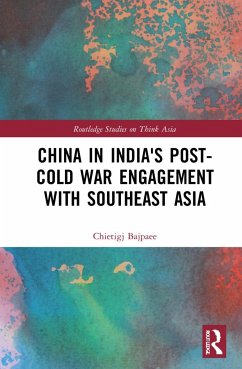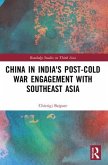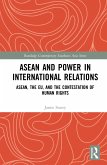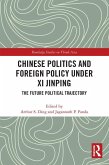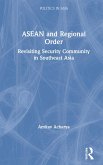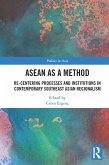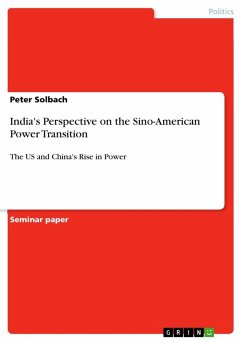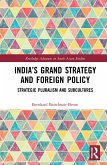This book examines the role of China in driving and sustaining India's post-Cold War engagement with Southeast Asia. In doing so, it provides a unique insight into the regional dimensions of the Sino-Indian relationship.
India launched its Look East Policy in the early 1990s as part of a concerted effort to revive the importance of Southeast Asia in the country's foreign policy agenda. This study assesses the role of the China factor - defined here as China's regional role, which has been interpreted through the prism of the Sino-Indian relationship - in the inception and evolution of the policy. More specifically, it establishes the extent to which China has been raised as a priority in discourses of India's Look East Policy and how this has varied over time from the origins of the policy through to the most recent phase of the renamed Act East Policy. Addressing the distinction between what policymakers signal in their official statements and their true or underlying motivations, the book alludes to the fact that government officials may not always reflect true intentions in their official statements, and it is often what is not said that may reveal more about their real motivations. This is particularly relevant in the context of the Sino-Indian relationship where diplomatic rhetoric often masks more competitive and confrontational aspects of the bilateral relationship.
An important analysis of the interplay between India's relations with Southeast Asia and China, this book will be of interest to academics, policymakers and students in the fields of International Relations, Asian Security, Southeast Asian politics, and in particular, Indian foreign policy, the Sino-Indian relationship, and India's Look East/Act East Policy.
India launched its Look East Policy in the early 1990s as part of a concerted effort to revive the importance of Southeast Asia in the country's foreign policy agenda. This study assesses the role of the China factor - defined here as China's regional role, which has been interpreted through the prism of the Sino-Indian relationship - in the inception and evolution of the policy. More specifically, it establishes the extent to which China has been raised as a priority in discourses of India's Look East Policy and how this has varied over time from the origins of the policy through to the most recent phase of the renamed Act East Policy. Addressing the distinction between what policymakers signal in their official statements and their true or underlying motivations, the book alludes to the fact that government officials may not always reflect true intentions in their official statements, and it is often what is not said that may reveal more about their real motivations. This is particularly relevant in the context of the Sino-Indian relationship where diplomatic rhetoric often masks more competitive and confrontational aspects of the bilateral relationship.
An important analysis of the interplay between India's relations with Southeast Asia and China, this book will be of interest to academics, policymakers and students in the fields of International Relations, Asian Security, Southeast Asian politics, and in particular, Indian foreign policy, the Sino-Indian relationship, and India's Look East/Act East Policy.
"[This book] provides an in-depth analysis of India's Look East Policy (LEP) by explaining its evolution through different phases. [... It] provides an important yet insightful analysis of the interplay between India's relations with Southeast Asia and China. [...] The book is highly recommended for the experts in the fields of international relations, China's foreign policy and also Indian foreign policy to gain a better understanding of China's role in the LEP over time." - Simran Walia, Modern Diplomacy July 2022.
[This book] departs from the conventional understanding in explaining India's engagement with Southeast Asia in the backdrop of economic liberalization and the maturing regional architecture in Asia as well as the growing importance of transnational security threats. [...] The book contributes to filling the gap in the existing literature, as Bajpaee's central argument delves into the assertion that it is not just with 'Act East' but rather the 'China factor' has been instrumental in 'driving and sustaining' India's post-Cold War engagement with Southeast Asia [...] a lucid and coherent read, the book is highly recommendet to both academics and policymakers, as well as students working on areas pertaining to Southeast Asia and Asian Affairs, at large; and Indian foreign policy, India-China relationship, and India's Look East/Act East Policy, in particular." - Amrita Jash, Strategic Analysis Vol 46, No.6, 641-643.
[This book] departs from the conventional understanding in explaining India's engagement with Southeast Asia in the backdrop of economic liberalization and the maturing regional architecture in Asia as well as the growing importance of transnational security threats. [...] The book contributes to filling the gap in the existing literature, as Bajpaee's central argument delves into the assertion that it is not just with 'Act East' but rather the 'China factor' has been instrumental in 'driving and sustaining' India's post-Cold War engagement with Southeast Asia [...] a lucid and coherent read, the book is highly recommendet to both academics and policymakers, as well as students working on areas pertaining to Southeast Asia and Asian Affairs, at large; and Indian foreign policy, India-China relationship, and India's Look East/Act East Policy, in particular." - Amrita Jash, Strategic Analysis Vol 46, No.6, 641-643.

